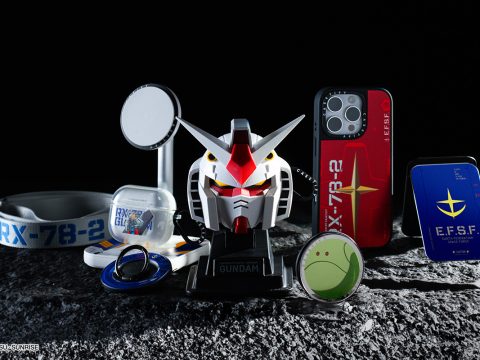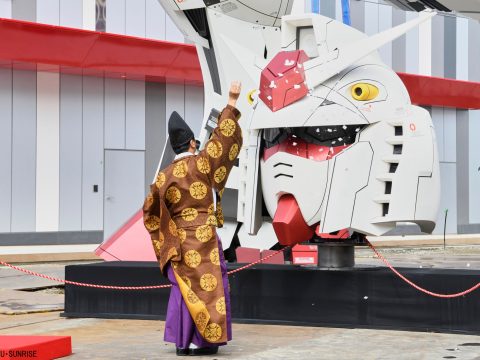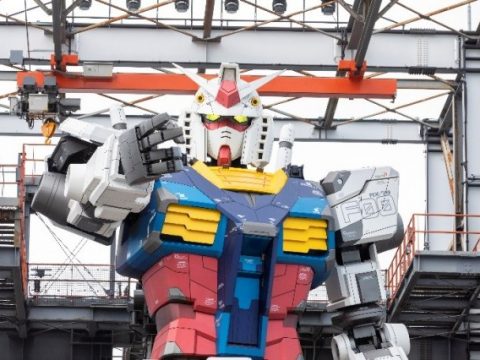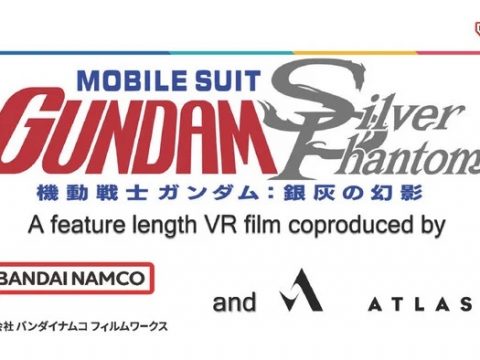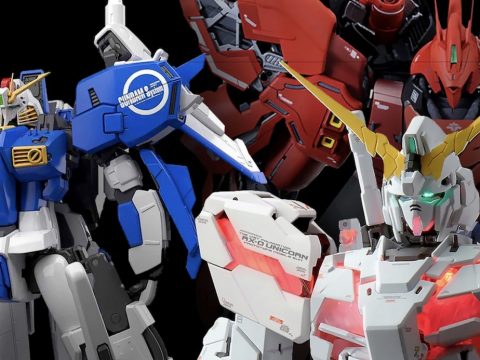
I remember the disdain among the hardcore Gundam fans after the first glimpse of the mustached Turn A Gundam. “What the f*** was Syd Mead smoking when he came up with that!?” was a conversation topic that would pop up from time to time with them, and it would always result in their never touching it with a ten foot pole. When the time came for the majority of the US fandom to actually get a chance to view it via importing VHS or DVD, it became clear that once you moved the mustache aside, Turn A Gundam was actually one of the most worthwhile shows that creator/director Yoshiyuki Tomino ever had a hand in.
As I mentioned in Issue 8 of Otaku USA, Turn A Gundam was part of Tomino’s “Comeback Trilogy”, (along with Brain Powerd and Overman King Gainer) but it also was another entry into Gundam’s Alternate Universe series. In the distant future (Correct Century 2345 to be exact), humanity has turned away from the advanced technology seen in previous series and has regressed to a civilization akin to the early 20th century. This doesn’t exactly work in their favor as the Moonrace, a group of humans originating from Earth who have recently come out of suspended animation, decide to make their move and take back the planet. The only hope of the “Earthrace” lies in Loran Cehack; a young man sent as a scout by the Moonrace three years earlier who discovers a Mobile Suit unearthed by an explosion. Dubbed the “White Doll”, Loran hops into the cockpit and fights to repel the invasion alongside the seemingly futile “Militia” forces. Amidst the fighting, our hero struggles to make peace between the two sides, all while trying to hide his true heritage.
To me, this series works because of the big three names that were involved: First, director/creator Yoshiyuki Tomino. His last series, Victory Gundam, suffered from frustration over the pressure from sponsors who wanted to turn the show into more of a commercial for toys and plastic models/Gunpla. After a good six year break from the franchise, whatever malice was in his system seemed to finally mellow out in time for the Comeback Trilogy, and it shows. No longer ruled by the corporate pressure, Tomino managed to craft a more character-driven Gundam series while at the same time pulling off a feat that still has fans talking to this day: Linking together the AU Series and the Universal Century Series of Gundam anime/movies. I’ll elaborate more on that in a bit, but I digress…
The second of the big three, composer Yoko Kanno, previously worked on Brain Powerd but had already gained critical acclaim with anime fans for her unique and mind-blowingly amazing scores for Macross Plus, The Vision of Escaflowne and Cowboy Bebop. With Turn A, Kanno retained the grand orchestral sounds from Brain Powerd but added a small hint of tribal-esque sounds (possibly to reflect the Earthrace’s primitive nature in comparison to the Moonrace) and epic choir ballads into the mix. Kanno’s trademark is that of meshing together different musical styles and elements that best represent/define whatever series she’s working on. Considering Turn A’s concept of integrating all the universes together, the overall theme of Kanno’s music fits well and makes the show all the more memorable.
The third big name is one that the fans weren’t singing the praises of from the getgo—Syd Mead. One of the show’s mechanical designers, Mead is best known in the states for his work on Blade Runner. Interestingly enough, Turn A wasn’t his first encounter with the Gundam series. In the early 80’s, Syd Mead was tapped to be the mechanical designer for an attempt by Lionsgate to make an American Gundam movie. Considering that Blade Runner came out prior to this, it makes sense that they wanted to strike while the iron was hot by using him. The iron, however, never made it past the anvil as the project ended up folding due to Lionsgate failing to get the legal rights to produce the film. Still, fate managed to give Mead a second chance when Bandai asked him to take a shot at his own “interpretation” of the classic Gundam design. Though controversial with some fans, Mead’s design eventually came into its own, doing well in figure and Gunpla sales. The resulting popularity actually gained Turn A the honor of being the 100th Master Grade model that was released last year.
Aside from the Big Three involved with this series, what really makes Turn A unique is the concept that truly made it stand out during its broadcast and even today: the universal quantifier of which Turn A is named. Throughout the TV series, Queen Diana Soriel of the Moonrace keeps mentioning the need to not repeat the “Black History”, never going into full detail as to what it is. However, there are various hints that keep popping up as the Militia forces manage to unearth more Mobile Suits (or Mechanical Dolls as they call them) and weapons from previous shows. Kapools from Gundam ZZ (Double Zeta) and the original Zakus from First Gundam are commonplace. Diana’s palace on the moon is an upturned Squid battleship from Victory Gundam. Even in the novels and various tie-in manga, there were references to other series such as Zeta and Gundam F91. You’d think that this is thinly veiled proof that this series takes place in the UC timeline, but it all builds up to the revelation of just the opposite. It’s not just the Universal Century–EVERY Gundam timeline is a part of the long-forgotten Black History! G-Gundam’s Fighting Century, Gundam Wing’s After Colony timeline, all of them make up the lost history of mankind that was sealed away along with the Turn A Gundam itself…Not to mention its overbearing older brother unit, the Turn X whose past usage is later revealed to have had a grave impact on humanity’s history.
(And no, that isn’t a major spoiler, it’s one of the selling points of the show. You know, like how everybody knows that everybody in Ideon-What do you mean you haven’t watched Ideon yet? Oh fine, I’ll keep quiet about that one…)
The merging of the UC and AU metaseries of Gundam still has people talking to this day as they try to piece together the timelines into a coherent history. There are those that would even dare to say that it’s the satisfying conclusion to the UC timeline. Who can blame them? With the exception of the Gundam Unicorn novels, everybody’s attention these days is towards shows like Gundam SEED and Gundam 00. Unless Tomino feels the desire to do a New Translation trilogy for Gundam ZZ or, heaven forbid, he dies, I doubt we’re going to be seeing anything else UC related in animated form anytime soon. Yes it sounds bleak and depressing but all things considered, Turn A would be a hell of a last hurrah to go out on.
Alas, nothing is perfect and this series is no exception. No, I’m not going to rag on the animation—Turn A Gundam was the last Gundam series to use traditional hand-drawn cel animation with every series afterwards embracing digital cel techniques. In actuality, Turn A’s flaws show up in the dialogue which, some may argue, is “Tomino Standard”. Even as far back as Zeta, Yoshiyuki Tomino tends to have these awkward, poorly worded moments that either make you giggle or leave you scratching your head. Granted he didn’t write the scripts this time around so the Tomino Standard is kept to a minimum, though that doesn’t mean the direction still isn’t prevalent. It’s said that Tomino’s works are something of an acquired taste; if you manage to sit through one Tomino-directed anime and actually like it, you’ll always be able to overlook the common flaws…but only just.
So with all this in mind, why not watch Turn A Gundam? You could wait for the angst-ridden second season of Gundam 00 or you could watch what is pretty much the magnum opus of the Gundam franchise. With solid writing from staff whose work ranges from one of the minds behind Code Geass to as far back as the Dirty Pair OVAs, beautiful mechanical and character design, and one of the most epic yet enchanting soundtracks out there, Turn A is Gundam at its finest.


